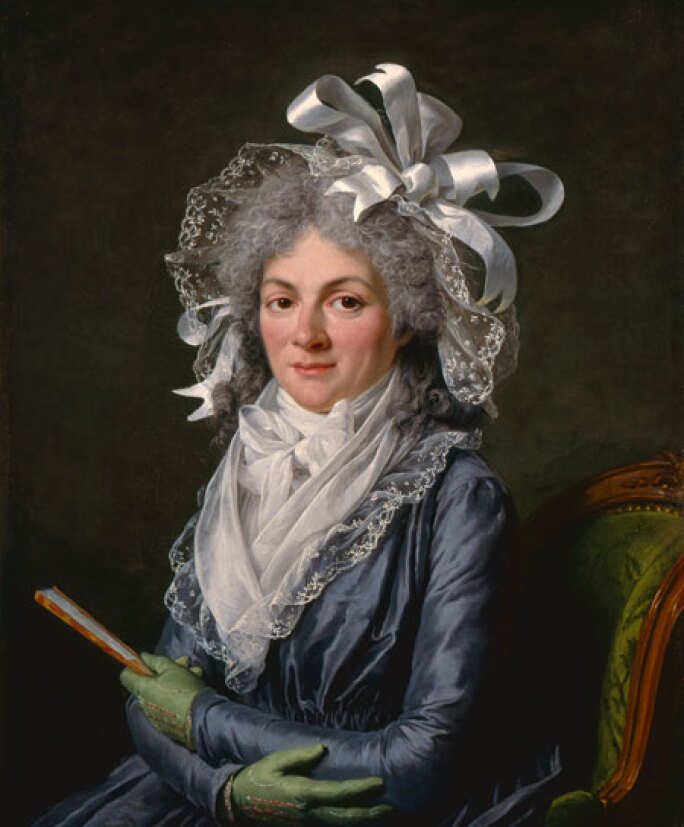If giving gloves is often our last resort when ideas for the perfect present elude us, in the past this act brimmed with symbolism, whether solemn and ceremonial or charged with eroticism. An absolutely vital accessory for centuries, they were essential to elegance and worn regardless of the season. Of course, gloves were also used to keep the wearer’s hands warm, but bygone times allowed for very little flesh to be exposed. Therefore, what you did show had to be unblemished. Soft, smooth hands were considered highly attractive, requiring gloves to be worn daily to protect the skin from the sun. This combination of necessity and proximity to bare skin made gloves a deeply personal offering. Covering a highly expressive and articulate part of the body, they touched what the wearer touched and accentuated both gestures and actions – so no wonder they took on such strong symbolic significance and were regarded as emblematic of fidelity and loyalty for hundreds of years.

Until the mid-19th century, it was customary to give gloves as tokens to guests at weddings and to mourners at funerals. The sentiment of a 17th-century poem reveals the popularity of the practice: “Come to our wedding to requite your loves / Shew us your hands and we’ll fit you with gloves.” Such generosity might be pricey for the hosts, but gloves of varying quality could be offered depending on the status of the recipient. Pairs made with the finest Spanish leather might be reserved for immediate family, while coarse sheep’s leather could be distributed among the servants and tradesmen. The apportioning of quality according to class provided a very clear message of the gloves’ intended use. For refined guests, they were decoration; for the lower classes, they were functional.

For warmth, leather was favoured, and the most prized leather came from Spain, in particular from Cordova. Cordovan leather was tanned with a special vegetal process that left it both highly impermeable and divinely soft. King Charles I, posed in a rather relaxed manner for Daniel Mytens’s portrait in 1631, is wearing gloves and boots in matching Cordovan leather. The hide is thick, but you can see just how supple it is from the way the gauntlet dimples and the long boot legs fold over themselves, rippling and wrinkling at the ankles. Leather gloves could be lined with fur and layered over finer silk pairs. Pelts of squirrel or marten were most commonly used, but since the amounts needed were small, fur could be salvaged from other garments and reused. In mid-17th century Europe, women’s sleeves became shorter for the first time in centuries, and gloves grew consequently longer to close the gap. This idea was taken to the extreme in Ann Demeulemeester’s Fall 2015 runway show, where long leather gloves were paired with sleeveless liquid-silk evening gowns, as well as Prada, where candy-coloured gloves accessorized embellished tweed frocks and short-sleeved woolen suits.
While rough sheepskin mittens could be made for the peasant classes, the skill required for the creation of proper gloves meant that even simple everyday pairs remained expensive items. Their luxury made them ideal gifts at court, and so in the 15th and 16th centuries, ambassadors often presented them as symbols of loyalty. Gloves were ornately embroidered with threads of coloured silk and precious metal, as is visible in the exquisite pair Hester Crispe wears in her portrait from around 1620. In line with the fashion of the day, the fingertips taper to a point to further elongate the hands. The more elaborate gloves like these demanded the work of at least three skilled craftsmen: an expert tanner for the leather, a glover to assemble the hand section and a nimble-fingered embroiderer to decorate the gauntlet. From the gently rippled creases at Hester’s thumb, you can see her gloves are made from the very softest kidskin. Hester wears only one glove and holds the other, better displaying her jewellery and cuffs, and throwing into relief the natural elegance of the hand left bare.

It was probably their direct contact with the skin that led to the eroticism of gloves. Not only were pairs often exchanged between lovers, but from the 16th to the 18th centuries, it was common practice to remove one glove and give it as a gift to a favourite. The idea of the item being presented still warm from the wearer’s hand is certainly suggestive. Following the death of King George IV, his executors purportedly found over a thousand mismatched ladies’ gloves among his possessions. They had been peeled from the hands of dancing partners, and many were still marked at the fingertips. That so many women would flatter the king with a favour is expected, but that he should hoard them until his demise perhaps verges on the fetishistic.
Jonquil O’Reilly is an Old Master Paintings specialist at Sotheby’s New York.
